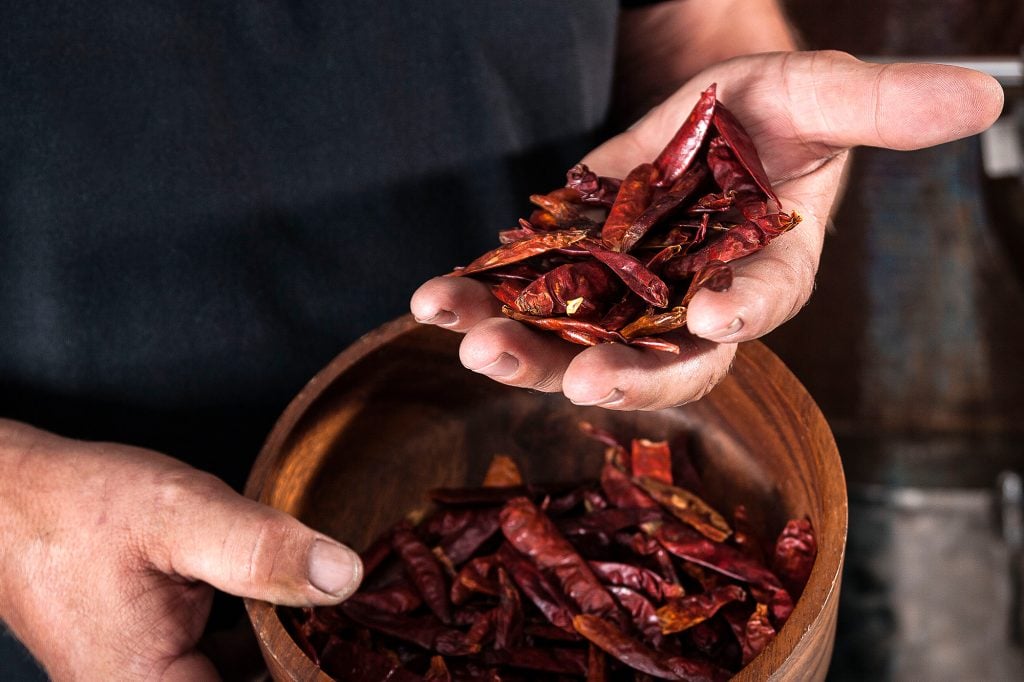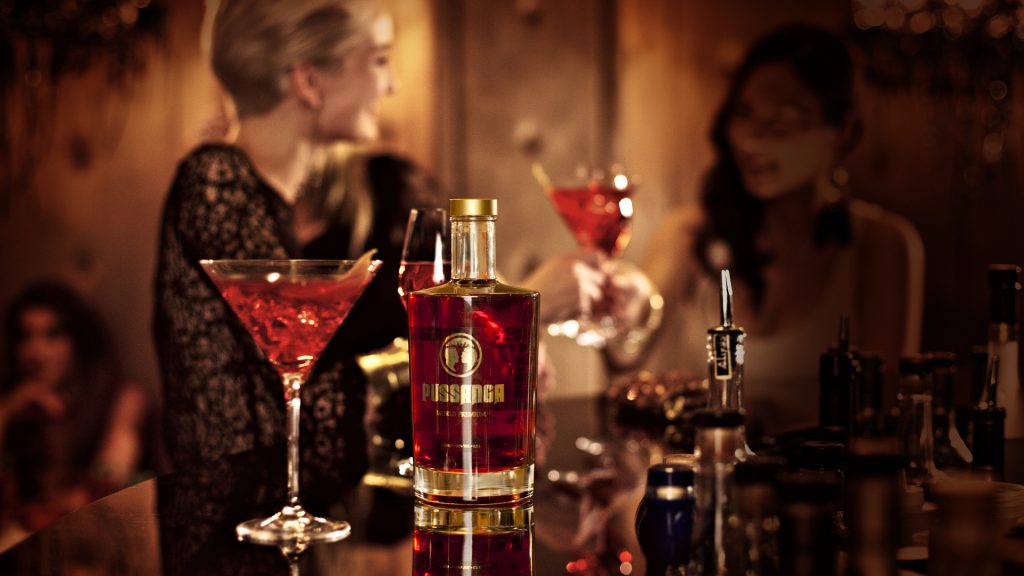Pussanga is made from a plant used in shamanic medicine as a love potion. It has been described as a liqueur, a new style of a spirit, or even a hybrid. But what is it? We speak to the founder to find out.
In Central and South American jungles there are plants known as pussanga whose root is used historically by local shamans to make love potions. This process was witnessed by a German scientist named Petra Spamer-Riether in the late 1980s, who visited Peru after her bachelor’s degree and then again after her masters’s degree, and later for her PhD travelled into the jungle to find with this special plant.
“I already started to learn quite good Spanish and I was in five different places at the Madre de Dios River, near the Manú National Park. I used to live with Machiguenga and Piro Pueblo indigenous people, and then I went to the Ucayali River,” says Spamer-Riether.
“I was working there in a little Indian village, Limojema, and I heard that locally there were some roots of ‘pussanga plants’, which means an aphrodisiac plant in the local language. They showed me the root and how they blended it with different herbs, plants, ginger and honey. It was always sweet and a little spicy, but it varies from different areas”.
Tasting that drink in the Peruvian jungle didn’t immediately lead to Spamer-Riether creating her own, however. She spent the next couple of decades working as a journalist in TV, radio, and newspapers, eventually making documentary films about science and nature, including about her travels in Peru.

Petra and Janina
A drink to remember
After one particularly grueling project her daughter, Janina, bought her a novel to relax with, The Cook by Martin Suter. In it, there’s a story about a cook who made aphrodisiac recipes for dinners. “I had a flashback to my time in Peru 25 years ago and thought I could create an aphrodisiac spirit like the shamans did”.
By 2011 she was working on what would become Pussanga, although it took a year of experimenting to create the recipe. “In the beginning, it tasted like cough medicine! I used some other aphrodisiac ingredients, like chilli and ginger, and settled on a recipe with a selection of fruits, herbs, and plants like pomegranate, thyme, basil, orange, strawberry, tangy raspberry, a lot of cardamom, some cinnamon, and a lot of vanilla”.
Of course, there’s the vital ingredient: crushed pussanga root from Peru and Mexico. Spamer-Riether won’t reveal the exact type of plant, but we do know it adds a complex, bitter flavour. With the help of her daughter, who is still involved although now splits her time between a PhD and the brand. She launched Pussanga at Bar Convent Berlin in 2013 to a great reception. People might not have known what it was exactly, but they liked it.

There’s some classic botanicals, and one special, secret ingredient
How to make a drink like no other
The drink is now made at a distillery in Spamer-Riether’s native Germany, using what she describes as a very complicated, handmade process. In a glass ball, alcohol is mixed with soft water from the mountains of the Spessarts in order to extract the flavours from the fruits, herbs, and spices.
Each ingredient is macerated over the course of two weeks, steeped into alcohol in cotton bags at selected intervals. “It’s tough because when you bring them all together you can’t filter the liquid. The pussanga root in particular is like dust, which is nearly impossible to filtrate. So one ingredient could need five days, another one nine,” Spamer-Riether explains.
The spirit is filtered several times and then everything spends a few months together in stainless steel containers to allow all the ingredients a chance to marry together and develop. Because each batch is made to taste rather than to measure, each bottle is unique.
The result is a drink that is fruity, spicy, bitter, and a little bit sweet. “It’s a unique taste. When one of our first awards in 2015, Cocktail Spirits Paris, one of the founders said ‘it’s a singular product, you can’t compare it with anything, it’s so special’,” Spamer-Riether says. She describes it as a hybrid. In 2015, Pussanga was chosen among the 100 most innovative spirits and has picked up numerous awards since its creation.

Is it a liqueur? Something else? Whatever it is, Pussanga tastes good
Drinking Pussanga
But what is it? In some countries, Pussanga can be classified as a liqueur, but as the definition of what makes a drink a liqueur differs so much across the world, that’s not a complete classification. A hybrid is not a bad way to put it. What’s most important is what it tastes like in your glass anyway, and happily it’s not only unique but really enjoyable.
Pour yourself a glass and you’ll find it’s spicy from chilli and baking spice. There’s also heaps of red fruit sweetness and sour tang which is balanced with a really pleasant dose of bitterness. There’s a touch of German liqueur heritage in that spice and herbaceousness, but it definitely stands on its own two feet. Immediately I’m thinking Pussanga would be an interesting base for a Spritz, but it would also mix well with tonic or sparkling wine. Although, I can’t say it had any love-potion qualities for me, and, in fairness, that’s not something the brand guarantees either.
While you might not land your soulmate with Pussanga, finding a suitable pair for the drink itself is not particularly hard. For Spamer-Riether, the sky’s the limit with how you can drink it. “It works in so many different cocktails because you can pair it with every spirit, Tequila, gin, vodka, rum, mezcal, whisky. The Ritz Hotel last year made a very nice cocktail with a Glenmorangie, and it makes a good Manhattan variation. Tony Pescatori created a very nice Pisco Sour with Pussanga,” she says. There’s a reason why top bars like Isabel’s, Amazonico, and Nightjar stock it.
But, if you want to keep it simple you can make yourself a Pussaga Tonic, just avoid the sweeter, flavoured tonics, or mix it with some Champagne. It’s also tasty neat, with Spamer-Riether saying she drinks it in the summer as a digestive, sometimes with ice cubes and a lemon or orange garnish, but she also likes to heat it in the winter, mixing it with black tea, making punches, or even with hot chocolate. It’s worth experimenting to find how you like best. Whatever you decide, it’s a safe bet you won’t have many other drinks like it in your cabinet.
